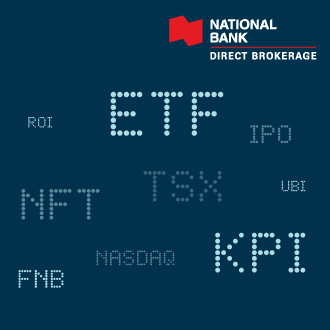What is Value Investing?
Value investing is an investment strategy that seeks out undervalued stocks based on specific financial indicators. The goal is to find securities that have a future potential not reflected in their current price. As more people come to appreciate their value, the hope is that their price will rise.
In some cases, value stocks and the sector they are in have fallen out of favor, or the stock is less well-known and underappreciated. In other cases, the company may be having short-term issues that have been blown out of proportion, but their long-term growth potential remains good. For the value investor, either represents an opportunity to buy the security at a reduced sale price.
When trying to determine how much a security is worth, value investors think in terms of intrinsic value versus market value. Rather than focusing on the value that the security has in the marketplace, value investors look at the stock’s underlying fundamentals to determine a company’s potential to generate cash flows and appreciate into the future.
How Value Investing works
Determining a security's intrinsic value involves poring over a company's financial statements to generate insights into the company's financial health and fundamentals. There is no single way to calculate intrinsic value, but the process typically involves an analysis of a company's different valuation metrics and indicators.
Value investing takes work and patience because the process requires considerable research. A value investor will typically have to look at dozens of companies before finding one that is an actual value stock.
It is also important to remember that there is a subjective element involved – two different investors can analyze the same company’s data and arrive at very different decisions. Value investors typically don't follow trends and look beyond what they hear in the news, focusing instead on carefully analyzing a company's earnings reports and financial statements.
Most importantly, value investors are looking for something other than 'quick buck' investments. Value investing is a buy-and-hold strategy that takes into important consideration the financial elements that often tend to move slowly in a publicly traded company. It can often take a long time for a value stock to get repriced to a higher level, but patient investors can sometimes see significant returns.
What are the pros and cons of value investing?
Value stocks often share similar characteristics. They are usually well-established companies in the mature business phase of their lifecycle with a history of earnings and profit growth. These companies typically have:
- Reliable and recurrent revenue
- Positive average growth rate
- Share prices that are generally less volatile than growth stocks
Though value investing remains a low-to-medium-risk investment strategy, there is always the possibility of losing money. It is essential to make sure you have access to the company's most up-to-date financial statements and reports, and that you pay special attention to the details in the footnotes. Some of the disadvantages of value investing include:
- Time it takes to do research and wait for positive returns
- Subjectivity involved in determining the intrinsic worth of value stocks
What is growth vs value investing?
Value investing is based on purchasing quality companies at a good price and holding onto these value stocks for the long term. The strategy was first developed in the 1920s. Today, some of the world's most successful investors use this strategy. But value investing is not necessarily for everyone.
Value stocks are usually compared to growth stocks. A large part of the appeal of growth stocks is based on the possibility for rapid increases in earnings and revenue. Growth stocks are often companies in technology and consumer discretionary that some investors believe will outperform the market over time because of their future potential.
Though they possess the highest potential reward, growth stocks (unlike value stocks) are usually associated with higher volatility and therefore higher levels of risk. They generally do not pay dividends and have a higher price-to-earnings (P/E) ratio.
How to start value investing?
Investors who choose to invest using a value investing strategy have many options available. For those looking for a hands-off approach most investment funds (mutual funds) and ETF firms offer value-themed investments. In general, the word value will be included in the name of the investment.
If you prefer holding individual stocks, then the following list of criteria is a great starting point to begin your search.
Five important indicators to look for in value stocks
-
Price to Earnings (P/E) Ratio. The P/E ratio is a metric that
represents the amount that investors are currently willing to pay
for a dollar of the company's net profit. It is a useful way to
determine a stock's performance over time and compare the value of
different stocks in the same sector.
Price to Earning (P/E) Ratio = Market Share Price / Earnings Per Share -
Earnings per share (EPS). EPS is a commonly used indicator to
show a company's profitability on a per-share basis. EPS can provide
a long-term view of how a company is growing its earnings. An
increasing EPS over a five-year period, for example, is an
indication of a company's consistent profitability and
earnings.
Earnings per share (EPS) = Net income / Common shares outstanding -
Price to Book (P/B) Ratio. The P/B ratio measures whether a
stock is over or undervalued by comparing its net value (assets -
liabilities) to its market price. For value investors, a low P/B
ratio can be an indication that the shares are trading for less than
their intrinsic worth. The value investor buys when the P/B ratio is
low, hoping that the market's perception will change and the stock's
value will appreciate.
Price to Book P/B (Ratio) = Market Price Per Share / Book Value Per Share -
Debt to Equity (D/E) Ratio. D/E is a measure of the extent to
which a company finances its operations with debt versus shareholder
equity. The higher the ratio, the higher the amount of borrowed
money at play and the greater the risk of being unable to pay it
back. Debt-to-equity ratios will vary by industry, so it's important
to compare the D/E ratio of companies that operate in the same
sector. A value investor will typically prefer a lower ratio but
will also look at performance in past years to determine if the D/E
ratio is decreasing – an indication that the company is paying back
its debts.
Debt to Equity (D/E) Ratio = Total Liabilities / Total Shareholder Equity -
Dividend Yield- Not all value stocks pay dividends, but many
do. Paying out dividends demonstrates that a company has the
financial ability to distribute part of its earnings to investors.
Like the D/E ratio, it is important to compare the dividend yields
of companies operating within the same sector. For value investors,
a consistent yield percentage over time can indicate that the
company is operating in a mature industry with an ongoing stream of
revenue and profit.
Dividend Yield = Annual Dividend / Current Share Price
What tool can I use to find value stocks?
The Strategy Builder tool is a great resource to help find stocks, to help support your value investing strategy.
Investors searching for value stocks can input their value criteria into the Strategy Builder tool to find potential asset matches. Alternatively, the tool offers value preset screens or expert strategies that you can use to begin your search.
Are you a value investor?
Value investing is not for every investor. There is a psychological and behavioural component to the strategy suited to particular investor personalities and specific financial goals. Because of the volume and the types of trades they perform, for example, a day trader would not make a good value investor. Day traders also look for quick returns and are willing to take on higher levels of risk.
A value investor is willing to do their homework – researching investment options, reviewing annual reports and financial statements, and using the different tools their online broker can provide. But most importantly, a value investor remains calm when things get volatile and stays the course. Patience is a critical personality trait for the value investor.
Value investors are in it for the long haul, not to follow trends.
Ready to start investing for the long term?
Key Takeaways
- Value investing is a low-to-medium-risk investment strategy.
- Value investing is for investors willing to do their research and hold on to securities for the long term.
- Value stocks are typically in mature industries and often pay out dividends.
- Unlike growth stocks, value stocks benefit from consistent, incremental growth over time.
1 Thune. K. Value Investing: What It Is, How It Works & Strategy. June 23, 2022.
2 Caplinger, D. The Value Investing Strategy. March 22, 2023.
3 Berger, R., B.Curry. What Is Value Investing? How Does it Work? April 4, 2022.
4 Hayes, A. Value Investing Definition, How it Works, Strategies, Risks January 29, 2022.
5 Elmerajji, J. 5 Must-Have Metrics for Value Investors. May 22, 2022.
6 Taube, S. Looking for Stock Bargains? Consider Value Investing. November 21, 2022.
7 Cussen, M. Value or Growth Stocks: Which Is Better? March 18, 2022.
8 Wall Street Prep. P/E Ratio
9 Tuovila, A. Earnings: Company Earnings Defined, With Example of Measurements. October 31, 2021.
10 Fernando, J. Dividend Yield: Meaning, Formula, Example, and Pros and Cons. March 14, 2023.





